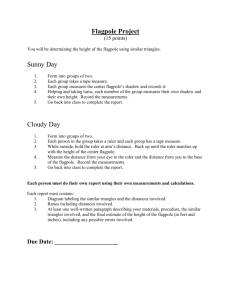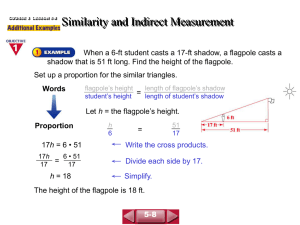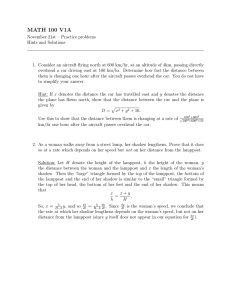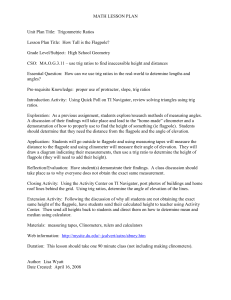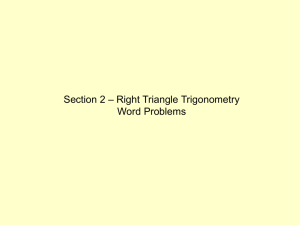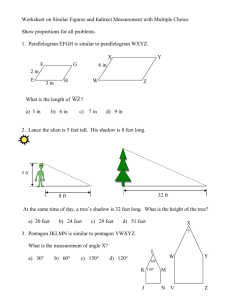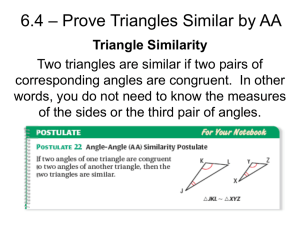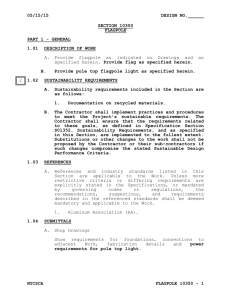Similarity Day 4: Indirect Measurement
advertisement
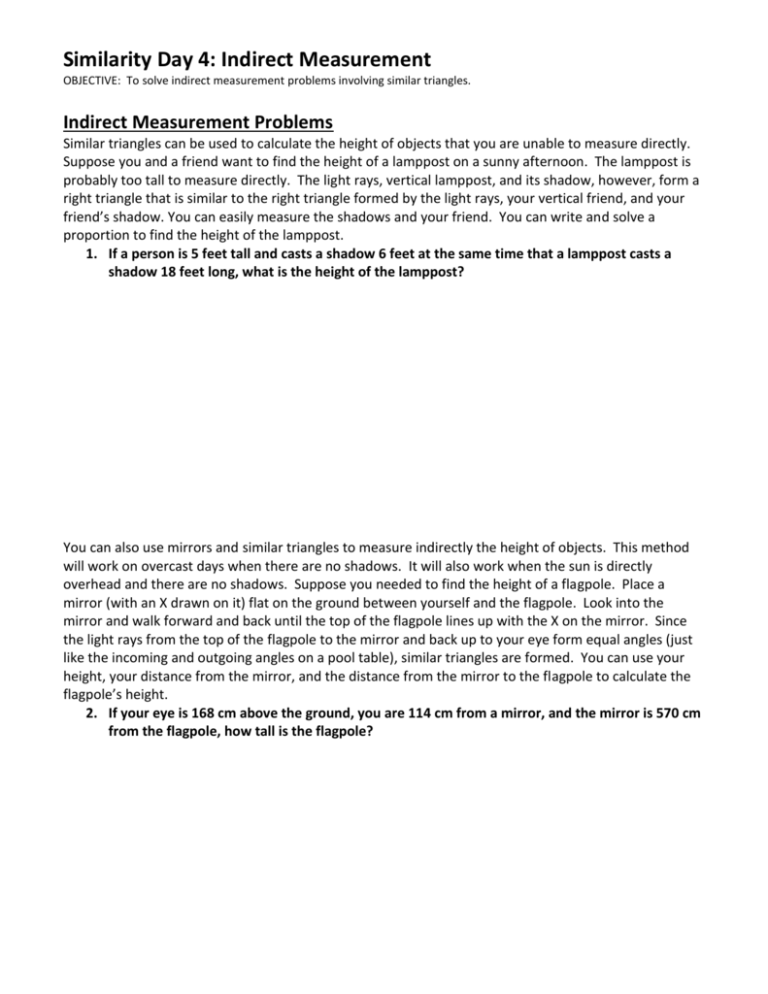
Similarity Day 4: Indirect Measurement OBJECTIVE: To solve indirect measurement problems involving similar triangles. Indirect Measurement Problems Similar triangles can be used to calculate the height of objects that you are unable to measure directly. Suppose you and a friend want to find the height of a lamppost on a sunny afternoon. The lamppost is probably too tall to measure directly. The light rays, vertical lamppost, and its shadow, however, form a right triangle that is similar to the right triangle formed by the light rays, your vertical friend, and your friend’s shadow. You can easily measure the shadows and your friend. You can write and solve a proportion to find the height of the lamppost. 1. If a person is 5 feet tall and casts a shadow 6 feet at the same time that a lamppost casts a shadow 18 feet long, what is the height of the lamppost? You can also use mirrors and similar triangles to measure indirectly the height of objects. This method will work on overcast days when there are no shadows. It will also work when the sun is directly overhead and there are no shadows. Suppose you needed to find the height of a flagpole. Place a mirror (with an X drawn on it) flat on the ground between yourself and the flagpole. Look into the mirror and walk forward and back until the top of the flagpole lines up with the X on the mirror. Since the light rays from the top of the flagpole to the mirror and back up to your eye form equal angles (just like the incoming and outgoing angles on a pool table), similar triangles are formed. You can use your height, your distance from the mirror, and the distance from the mirror to the flagpole to calculate the flagpole’s height. 2. If your eye is 168 cm above the ground, you are 114 cm from a mirror, and the mirror is 570 cm from the flagpole, how tall is the flagpole?
